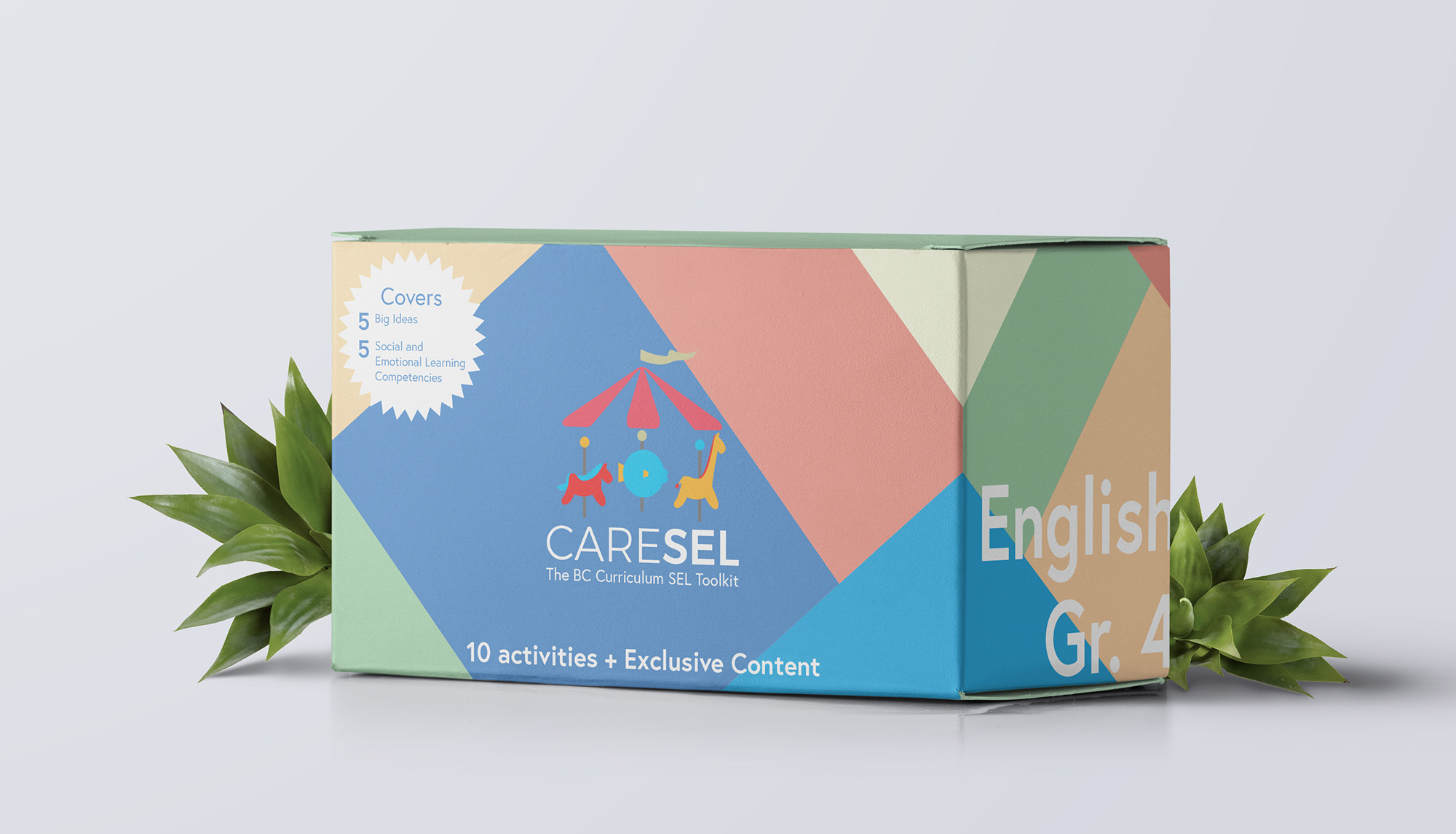
Overview
A toolkit that empowers teachers to incorporate SEL with pick-up-and-go lessons tied into subjects they already teach.
Teachers lack the support and class time to teach the new social and emotional learning (SEL) aspect of the updated British Columbia (BC) Curriculum. Research has proven that SEL improves prosocial behaviours and student attitudes toward school while reducing depression and stress. Why teach a regular English class when there is an opportunity to instill SEL into the lesson?
My Role
Team of Four
User Experience, User Research, Visual Design
Nathan Lam, Demetra Barbacuta, Wendy Zhang, Takunda Chisvo
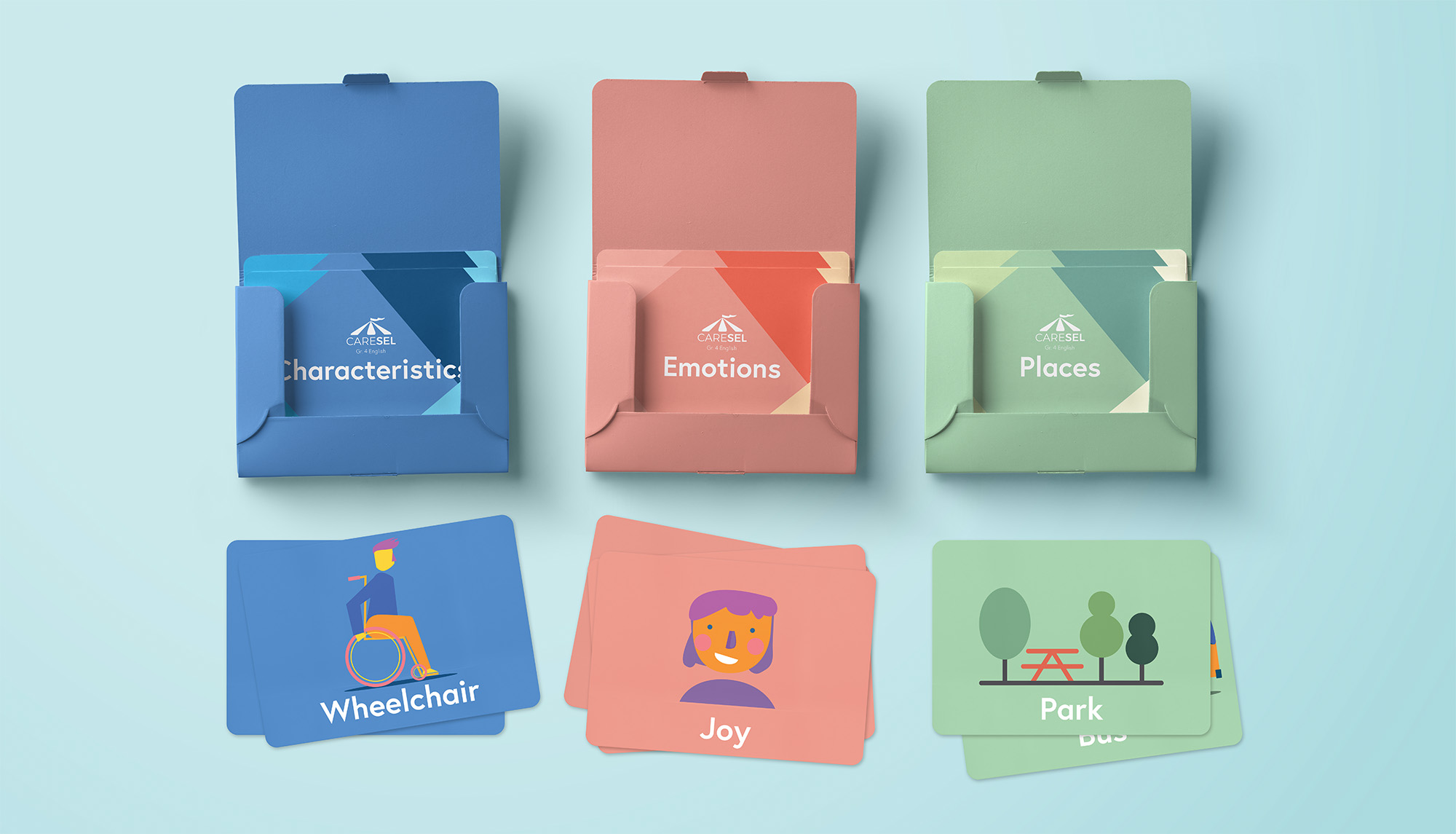
Picking one card from each deck, children must develop a story of why the character is feeling an emotion at a specific location
Research
Working upstream to instill healthy behaviours early-on, leading to lifelong habits.
The Centre for Addiction and Mental Health states that early action can potentially reduce young people’s risk for poor mental health in the future and allow youth to develop their own health‐seeking abilities and behaviours. Mental health and wellness in Surrey is the third greatest challenge youth believe they face. By working upstream to better the mental health of the Surrey youth population, we instill healthy behaviours early-on, leading to lifelong habits.

About 1/7 young people in BC will experience a mental illness at some point
The Early Development Instrument (EDI) measures five core areas of early child development that are known to be good predictors of adult health. Children of Surrey are most vulnerable in social competence and emotional maturity.

Two of the highest percentages of children in Surrey are social competence and emotional maturity
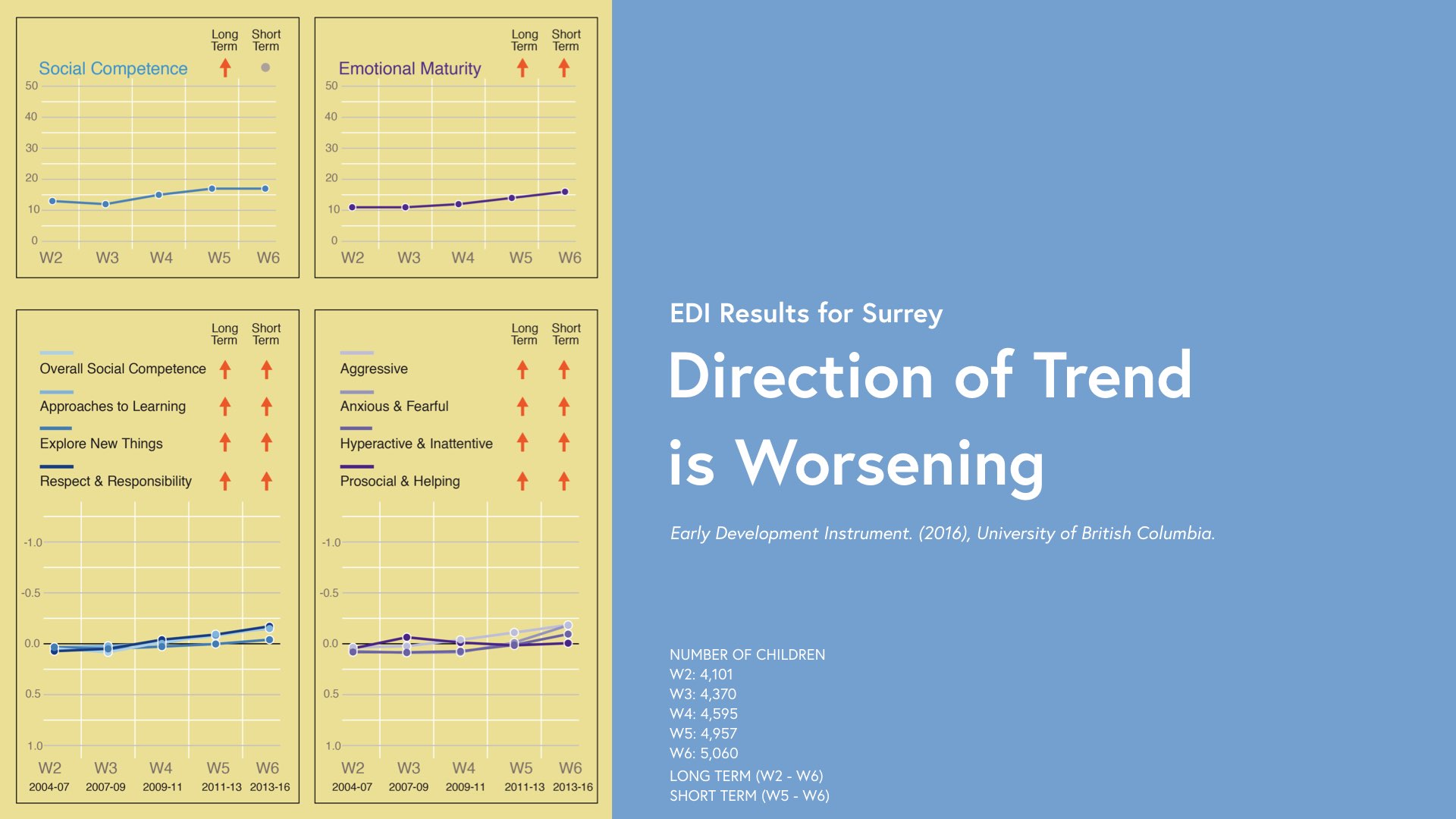
EDI trend results are worsening as percentages are increasing over time
Determining strengths through competitive analysis.
There are a few comparable resources that currently exist: MindUP, Roots of Empathy, Second Step, and Zones of Regulation. Our solution aims to fill the gap in accessibility and alignment with the BC curriculum.

Comparable resources lack accessibility and alignment with the BC Curriculum
Usability Testing
Overestimating the capabilities of 10 year olds.
Having access to the classroom you begin to understand they are still very young children. Key feedback points were that the teacher would need to adapt the activity to his class and by the end of the year they would get it. Language such as ‘attribute’ needs to be simplified. Finally lean into our strength of integrating the BC Curriculum.
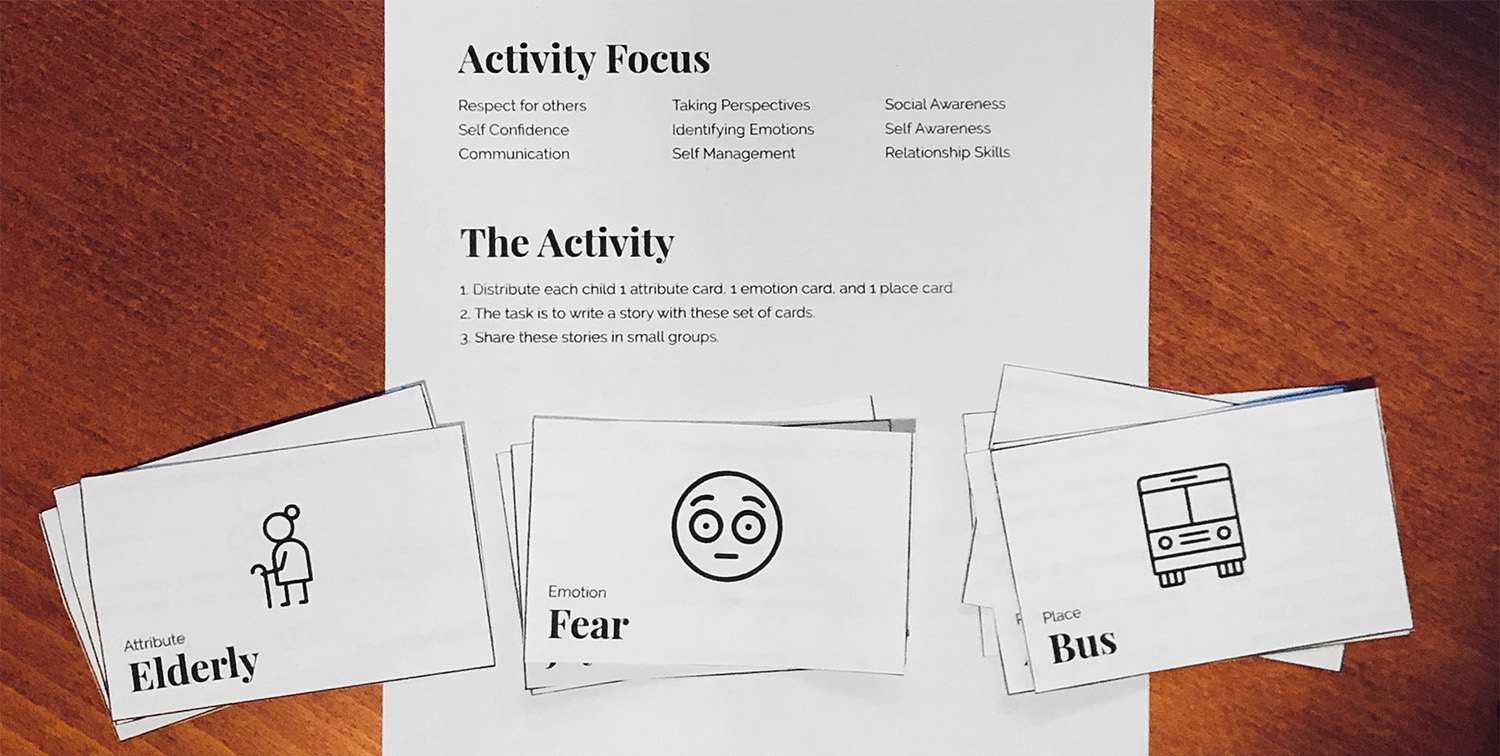
Prototype of Perspective Cards activity
User Research
Learning and applying from 6 experts, 24 parents, 11 teachers, and 5 children.
The key takeaways were the importance of the EDI, programs offered in Surrey focused more on treatment and less on prevention, and the teacher's opinions to SEL changes. About 50% know they need to teach SEL, it's important, but don't know how and want support. This became our key target audience while children are the beneficiary.
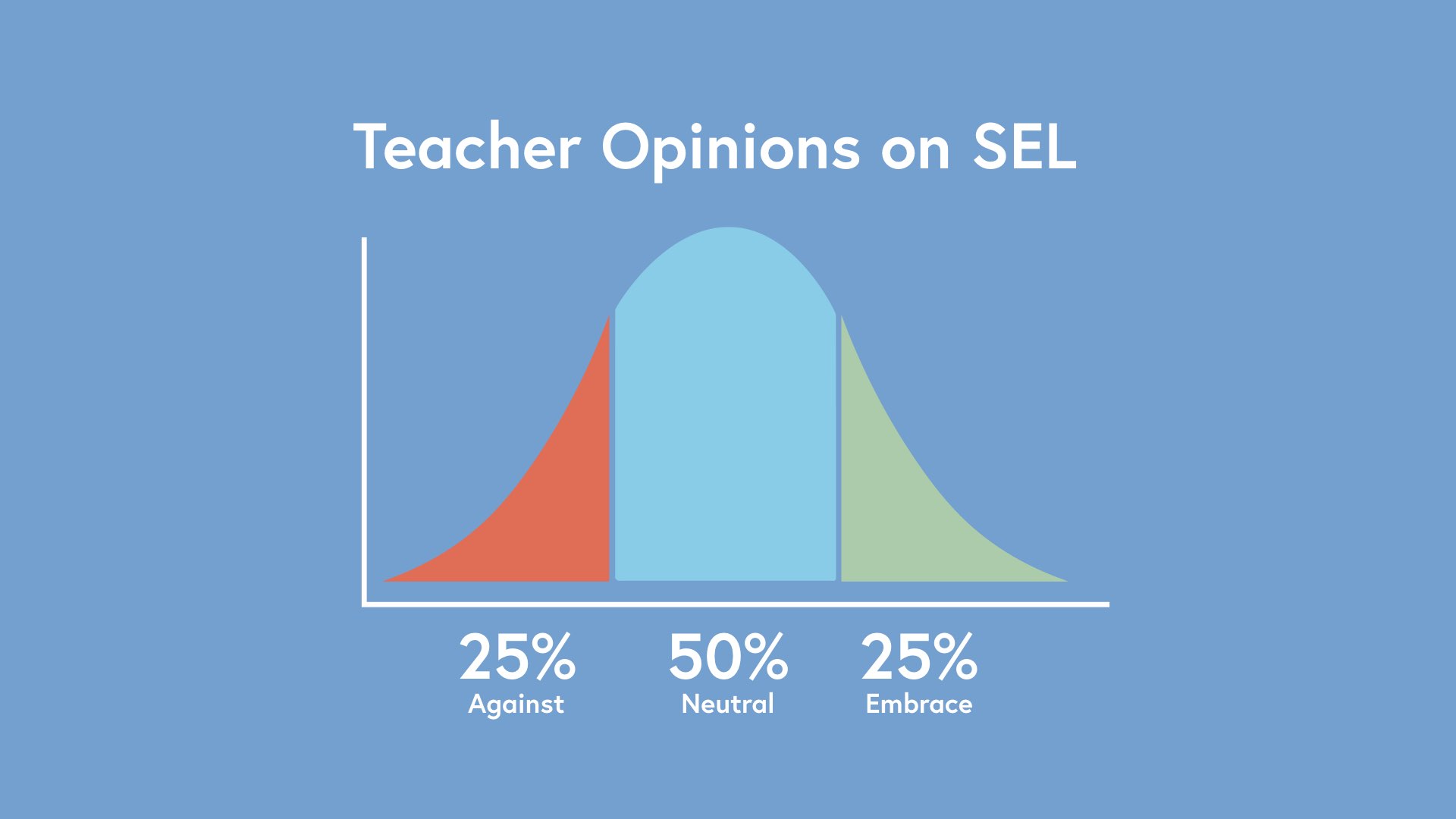
Similar to the adoption curve, 25% are against, 50% are neutral, and 25% embrace SEL
Making the connection to the BC Curriculum so teachers don’t have to.
BC Core Competencies are five big ideas identified for every grade and subject that students should meet based off intellectual, personal, social, and emotional proficiencies. SEL Core Competencies are qualities that children should display to indicate good social and emotional well-being. By presenting this information up front, teachers can spend more time on more important tasks instead of cross-checking if requirements are met.
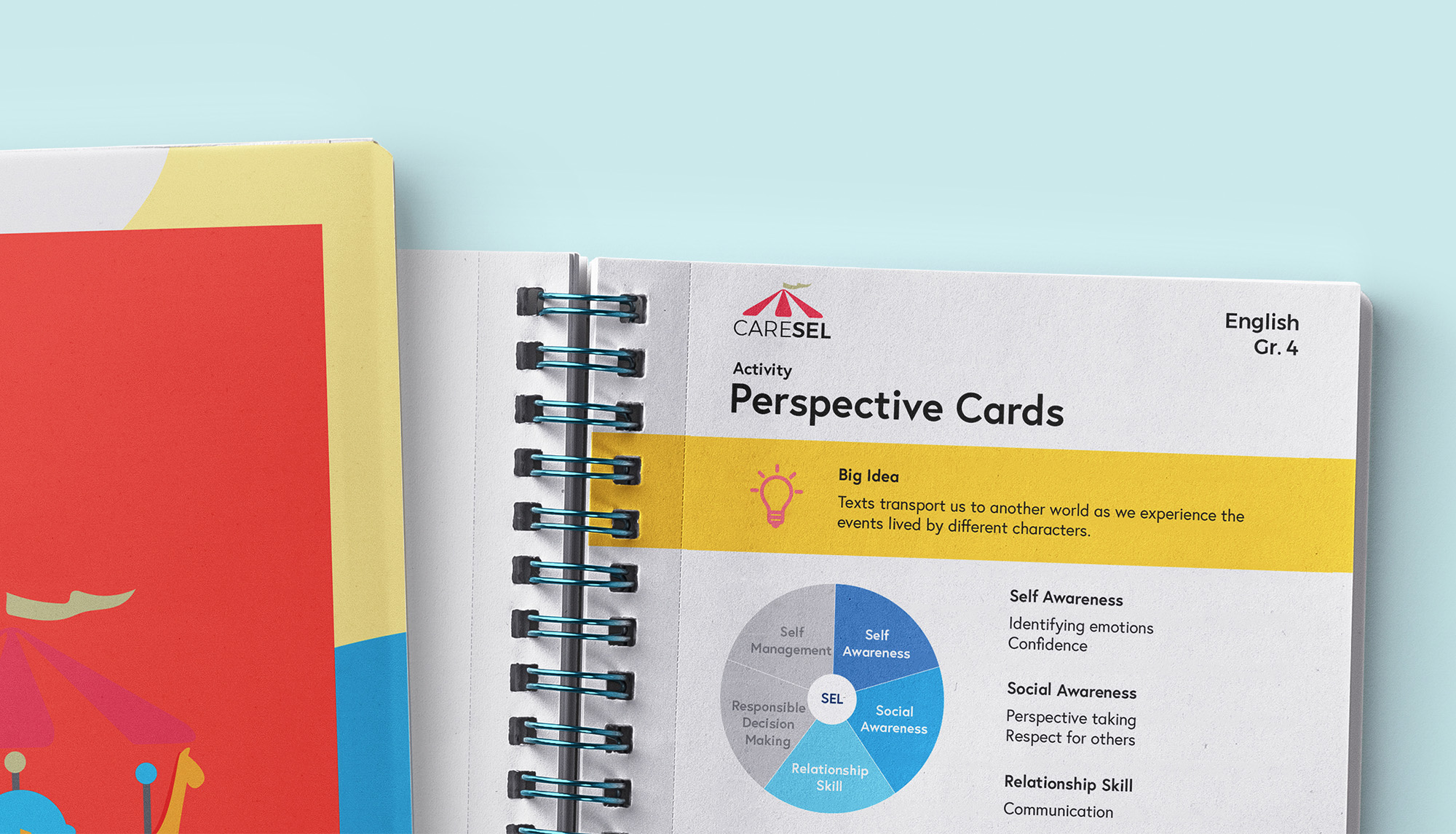
Identifying the big idea and social competencies that are covered in the Perspective Cards activity
Ensuring the same toolkit is adaptable for different classrooms.
Teachers have informed us that classes of the same grade have different skill levels. Allowing each activity to have three different levels of teacher involvement demonstrates scaffolding in learning and promotes adaptability.
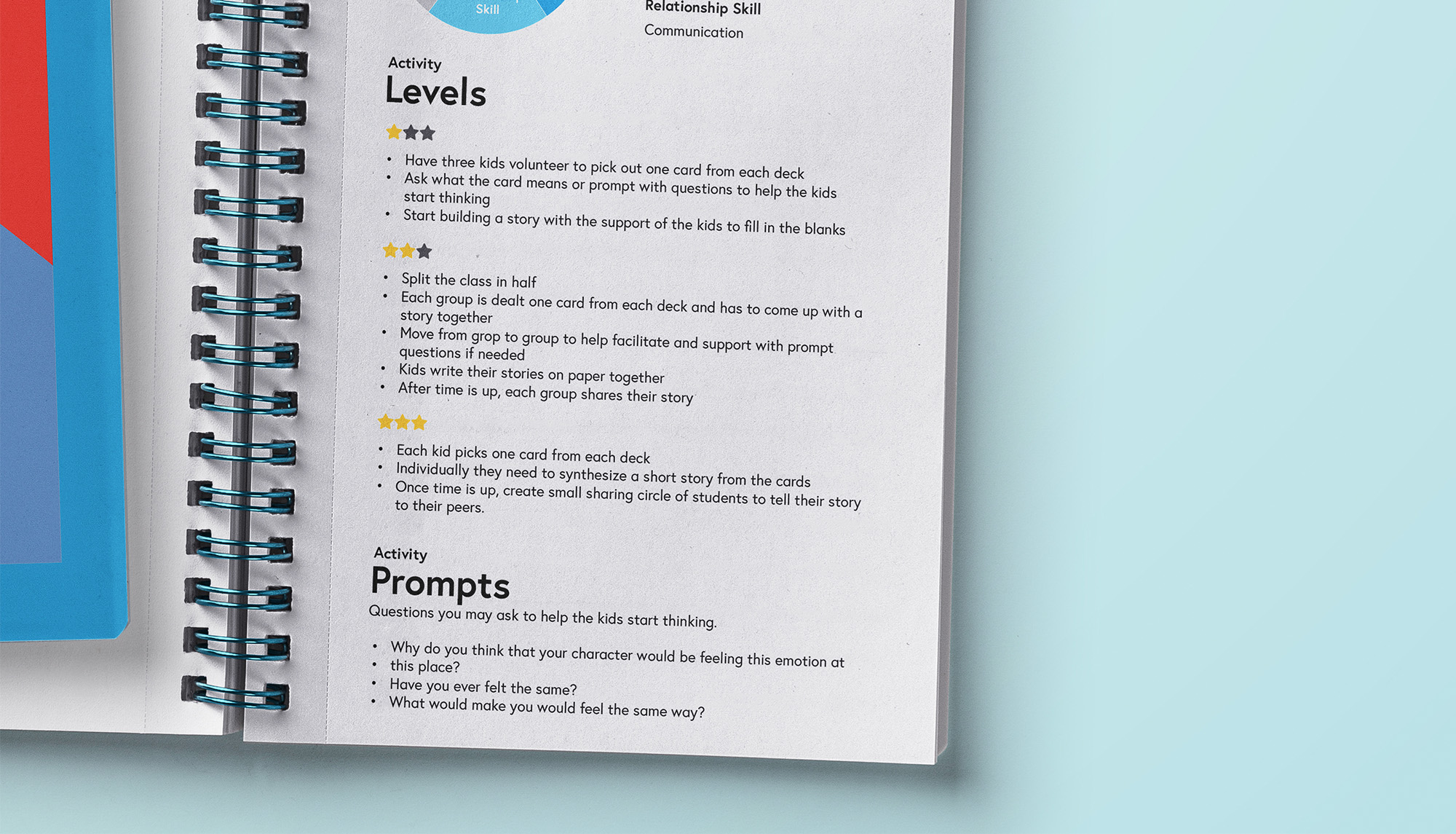
Three different levels of teacher involvement in the Perspective Cards activity
Budget can plague learning opportunities, we removed that constraint with a printable kit.
A teacher’s budget can be tight, and we learned they rely heavily on word of mouth for their tools. To work around budget constraints our toolkit is accessible through a PDF download for a social media share.

Printable PDF version of the toolkit, self-assembly is required
Reflection
To fully develop the toolkit, working with an educator is key to the process.
A lot of groundwork was made, but to develop the rest of the activities we need involvement from an educator to ensure its reliability. After activities are created there is opportunity to include extensions that provide more layers into an activity. Finally, budget is a huge problem, exploring the purchase flow with the inclusion to add a donation to provide kits to underfunded schools would be interesting.
